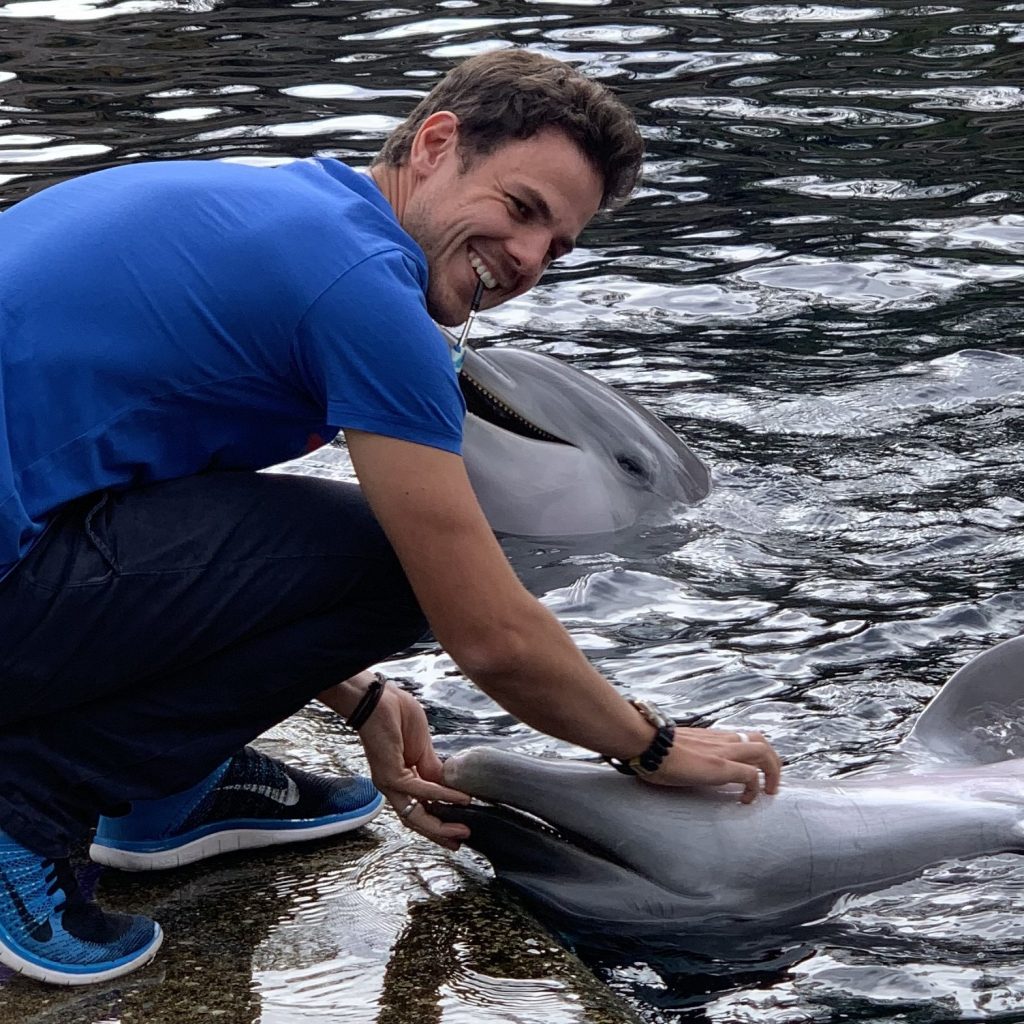
Tim Hüttner is a behavioural biologist and specializes on the behavior and the sensory ecology of dolphins. For his doctoral research at the University of Rostock he investigated the ability of bottlenose dolphins to detect weak electric fields in water. He is also involved in developing an evidence-based tool to evaluate the welfare of dolphins under human care as well as multiple other research and conservation projects of Nuremberg Zoo covering a variety of different species.
ELECTRORECEPTION IN THE BOTTLENOSE DOLPHIN
Electrorecpetion describes the ability to detect bioeletric fields in water and is mainly known from aquatic predators. Sharks and rays, or the platypus use their electric sense when searching for bottom-dweilling prey. In 2012, it could be shown that yet another aquatic species possess passive electroreception: the Guiana dolphin (Sotalia guianensis). These dolphins frequently dig for fish hidden in the sediment and detecting the weak eletric fields emitted by body functions could supplement their well establlished sensory modalities of hearing, echolocation, and vision and facilitate prey detection.
Anaotmical evidence as well as the fact that the bottlenose dolphin shows a similar foraging strategy („crater-feeding, Rossbach & Herzing, 1997) lead Tim to investigate if bottlenose dolphins also possess passive electroreception. Therefore, he trained four dolphins with a stimulus generalization task and tested if bottlenose dolphin respond to weak electric fields. His results confirm that Tursiops can sense weak eletric fields as they are generated by fish which can help the dolphins to localize their prey over short distances.
The video below shows one experimental trial of Tim’s research with Donna, a female dolphin living at Nuremberg Zoo. After the dolphin enters the underwater apparatus it touches the target and wait calmly. Using the electrode above the rostrum of the dolphin Tim generates a weak electric field and Donna immediatly leaves the apparatus indicating that she perceived the stimulus.
PUBLICATIONS
Dehnhardt, G., Miersch, L., Marshall, C. D., Fersen, L. von, & Hüttner, T. (2020). Passive Electroreception in Mammals. In B. Fritzsch (Ed.), The Senses: A Comprehensive Reference (Second Edition) (pp. 385–392). Elsevier. https://doi.org/10.1016/B978-0-12-809324-5.24158-8
Fersen, L. von, Encke, D., Hüttner, T., & Baumgartner, K. (2018). Establishment and Implementation of an Animal Welfare Decision Tree to Evaluate the Welfare of Zoo Animals. Aquatic Mammals, 44(2), 211–220. https://doi.org/10.1578/AM.44.2.2018.211
Huettner, T., Dollhaeupl, S., Simon, R., Baumgartner, K., & Fersen, L. von (2021). Activity Budget Comparisons Using Long-Term Observations of a Group of Bottlenose Dolphins (Tursiops truncatus) under Human Care: Implications for Animal Welfare. Animals, 11(7), 2107. https://doi.org/10.3390/ani11072107
Hüttner, T., Fersen, L. von, Miersch, L., Czech, N. U., & Dehnhardt, G. (2022). Behavioral and anatomical evidence for electroreception in the bottlenose dolphin (Tursiops truncatus). The Anatomical Record, 305(3), 592–608. https://doi.org/10.1002/ar.24773
Mynett, N., Mossman, H. L., Huettner, T., & Grant, R. A. (2022). Diversity of vibrissal follicle anatomy in cetaceans. The Anatomical Record, 305(3), 609–621. https://doi.org/10.1002/ar.24714
CONTACT
e-mail: huettner.tim@gmail.com
researchgate: https://www.researchgate.net/profile/Tim-Huettner-2